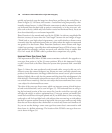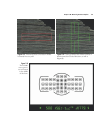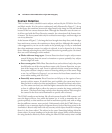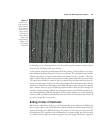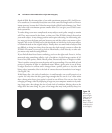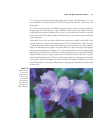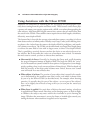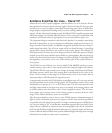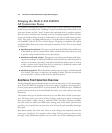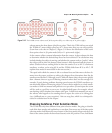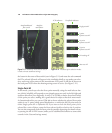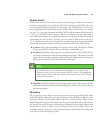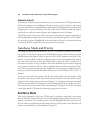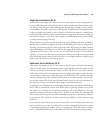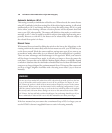
Bringing the Multi-CAM 4800DX
AF System into Focus
I’ve explained individual bits and pieces of the Nikon D7000’s autofocus system earlier
in this book, particularly in the “roadmap” sections that showed you where all the con-
trols were located, and the “setup” chapters that explained the key autofocus options.
Now it’s time to round out the coverage as we tie everything together. There are three
aspects of autofocus that you need to understand to use this essential feature produc-
tively. They apply—in slightly different ways—to both autofocus when using the opti-
cal viewfinder, and in Live View. In this chapter, I’m going to emphasize the optical
viewfinder/Phase Detection system, and explore autofocus in Live View in more detail
in Chapter 6.
■ Autofocus point selection. This aspect controls how the D7000 selects which areas
of the frame are used to evaluate focus. Point selection allows the camera (or you)
to specify a subject and lock focus in on that subject.
■ Autofocus mode and priority. This governs when during the framing and shoot-
ing process autofocus is achieved. Should the camera focus once when activated, or
continue to monitor your subject and refocus should the subject move? Is it okay
to take a picture even if sharp focus isn’t yet achieved, or should the camera lock
out the shutter release until the image is sharp?
■ Autofocus activation. When should the autofocus process begin, and when should
it be locked? This aspect is related to the autofocus mode, but uses controls that
you can specify to activate and/or lock the autofocus process.
Autofocus Point Selection Overview
I’m discussing this aspect of autofocus first, because, in many ways, it is the most impor-
tant. If your D7000 isn’t focusing on the correct subject, autofocus speed and activa-
tion are pretty much wasted effort. As you’ve learned, the D7000 has up to 39 different
points on the screen that can be individually selected by you or the camera as the active
focus zone.
The number and type of autofocus sensors in use can affect how well the system oper-
ates. The focus sensors can consist of lines of pixels, cross-shapes, and/or a mixture of
these types within a single camera, as with the D7000. The more AF points available,
the more easily the camera can differentiate among areas of the frame, and the more
precisely you can specify the area you want to be in focus if you’re manually choosing a
focus spot.
But, there’s another side of the coin. There is such a thing as too many focus zones for
some types of subjects. For example, when using 39 focus points to select a zone
for large, evenly illuminated subjects, you can waste a lot of time thumbing the multi
David Busch’s Nikon D7000 Guide to Digital SLR Photography144



